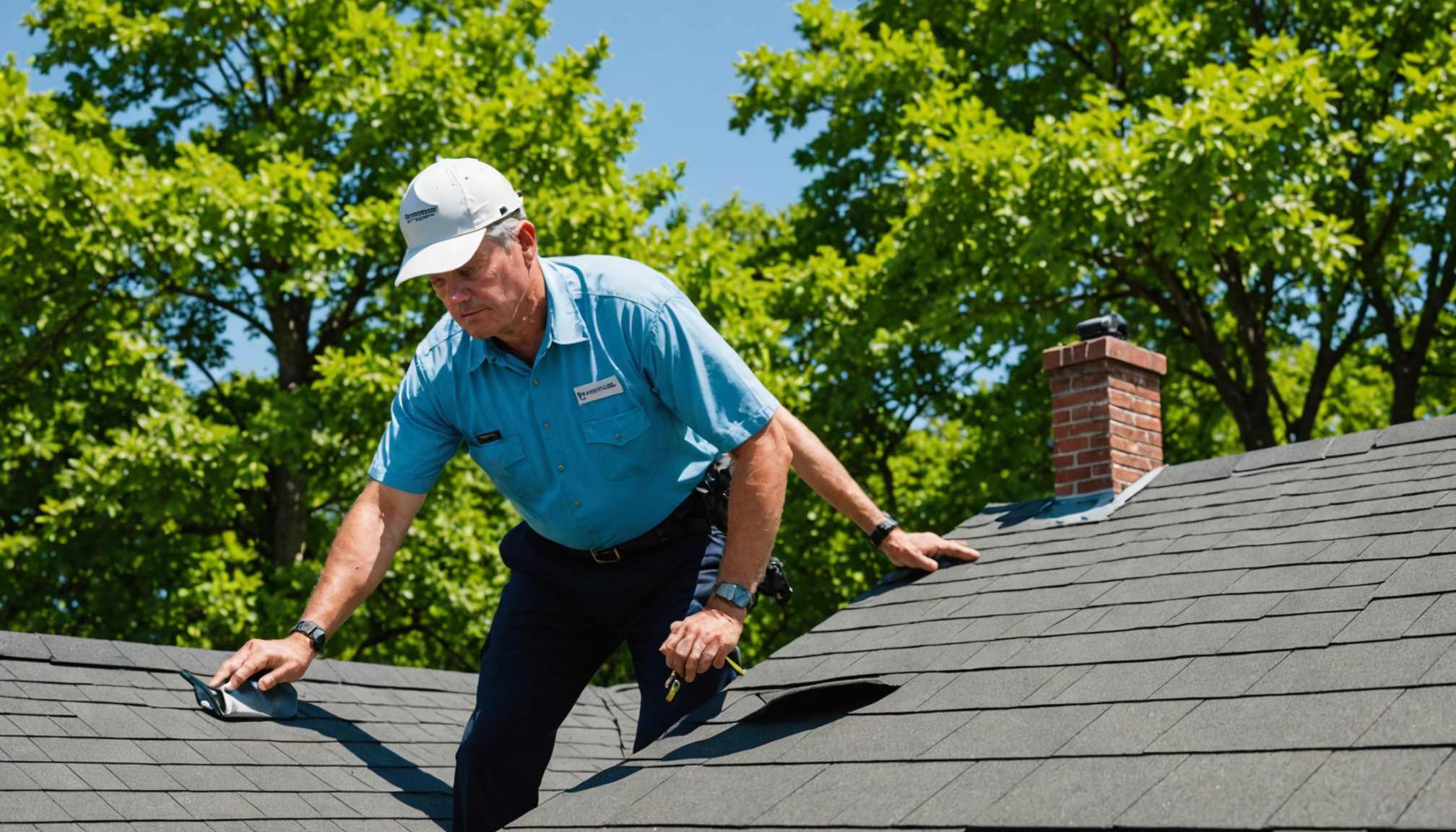Understanding the home inspection process is a pivotal step in ensuring a successful home sale or purchase. A home inspection is a thorough evaluation of a property’s condition, typically conducted by a certified inspector. The inspector will assess various components of the house, including the structure, roof, electrical, plumbing, and HVAC systems, to identify any existing or potential issues. This process is crucial for both buyers and sellers, as it provides transparency regarding the property’s current state, allowing for informed decisions.
The inspection begins with a detailed walkthrough by the inspector, who will examine both the interior and exterior of the home. During this visit, the inspector will pay close attention to areas that are susceptible to wear or damage. While no property is entirely devoid of flaws, understanding the severity and potential impact of any issues is essential. Inspectors typically provide a comprehensive report post-inspection, detailing their findings. This report may recommend repairs or the need for further evaluation by specialists.
The scope of a home inspection can vary based on factors like the location of the property, age of the home, and specific buyer or seller concerns. Below is a table outlining some common areas of inspection and what they typically entail:
| Component | Focus Areas |
| Roof | Condition of shingles, presence of leaks, condition of gutters and downspouts |
| Electrical System | Wiring conditions, functionality of outlets and switches, breaker panel evaluation |
| Plumbing | Leaks, water pressure, condition of pipes, water heater efficiency |
| Foundation | Signs of cracks or shifting, water drainage issues, structural integrity |
| HVAC System | Operational status, maintenance history, age of units |
A home inspection can vary in length, usually ranging from two to four hours, depending on the size and age of the home. During the inspection, it’s beneficial for buyers, sellers, or their agents to accompany the inspector, if possible. This allows for an immediate discussion of any significant findings and gives an opportunity to ask questions directly related to the inspector’s observations.
Buyers, typically, use the inspection report to negotiate repairs or price adjustments. Sellers can address issues upfront to expedite the sale process or adjust their asking price in consideration of any identified issues. For everyone involved, a clear understanding of the inspection process helps in setting realistic expectations and facilitates smoother transactions.
Prioritizing repairs and maintenance
 When it comes to preparing for a home inspection, prioritizing repairs and maintenance is an essential step that requires careful planning and execution. Tackling necessary repairs proactively not only helps ensure a positive inspection outcome but also boosts the property’s marketability. Here’s a guide to help you effectively prioritize and address home repairs and maintenance tasks before the inspection:
When it comes to preparing for a home inspection, prioritizing repairs and maintenance is an essential step that requires careful planning and execution. Tackling necessary repairs proactively not only helps ensure a positive inspection outcome but also boosts the property’s marketability. Here’s a guide to help you effectively prioritize and address home repairs and maintenance tasks before the inspection:
1. Review Past Repair Records
– Begin by reviewing any previous repair or maintenance records. This will give you an insight into recurring issues or components that may not have been repaired correctly in the past. Understanding the home’s repair history will help prioritize what needs immediate attention.
2. Conduct a Pre-Inspection Walkthrough
– Perform a comprehensive walkthrough of the entire property, both inside and out. During this walkthrough, pay particular attention to visual clues of damage such as water stains on ceilings, peeling paint, cracked sidewalks, and any other noticeable defects. Make note of these issues for further assessment.
3. Prioritize Structural Integrity
– Structural aspects of the home should be at the top of your list. Inspect the foundation for any noticeable cracks or signs of settling, and examine the roof for missing or damaged shingles. Ensuring the structural components of the home are sound is crucial, as these are often high-ticket items that can impact the sale process significantly.
4. Evaluate Major Systems
– Evaluate major home systems such as HVAC, plumbing, and electrical. Make sure your HVAC system is properly serviced, that there are no visible leaks under sinks or fixtures, and that all electrical outlets and switches are functional. Systems need to operate safely and efficiently to prevent potential negative marks during the inspection.
5. Address Health and Safety Concerns
– Address any health and safety concerns immediately. This includes checking for the presence of smoke and carbon monoxide detectors, ensuring that handrails are secure, and fixing any tripping hazards like loose tiles or uneven steps. Safety features are critical and weighed heavily during an inspection.
6. Focus on Cosmetic Updates
– While structural and safety issues take precedence, don’t disregard smaller, cosmetic updates. Simple tasks such as patching up holes in walls, fixing chipped paint, and ensuring doors and windows open and close easily can make a favorable impression.
7. Fix Minor Plumbing Issues
– Go through the home and check for common minor plumbing issues such as dripping faucets, slow drains, or running toilets. These are relatively easy fixes but can annoy inspectors and buyers alike if left unresolved.
8. Develop a Repair Plan and Budget
– Once you have assessed the home, create a detailed plan and budget for each repair task. This will help you organize which jobs are urgent and which can be completed with a bit more flexibility with timing and resources. Assess which repairs you can handle yourself and when it might be best to hire a professional.
9. Consult with Experts
– For larger issues, or if you’re unsure of the extent of certain problems, consider consulting with a contractor or specialist. They can provide expert advice and might identify repair needs you haven’t caught during your own assessment.
By strategically prioritizing repairs and routine maintenance, you can ensure that your home is in the best possible condition for an inspection. This proactive approach will not only potentially increase the market value of your property but also keep the negotiating process smoother with potential buyers.
Organizing important documents
 Having your essential documents organized is key to ensuring a smooth home inspection process. This step involves gathering, categorizing, and presenting necessary paperwork to provide a transparent view of the home’s history and maintenance. Being well-prepared with the right documentation can significantly influence the inspection outcome by building trust and demonstrating that the property has been well-cared for.
Having your essential documents organized is key to ensuring a smooth home inspection process. This step involves gathering, categorizing, and presenting necessary paperwork to provide a transparent view of the home’s history and maintenance. Being well-prepared with the right documentation can significantly influence the inspection outcome by building trust and demonstrating that the property has been well-cared for.
Start by assembling important documents related to the home's maintenance and repairs. This should include receipts or records of recent renovations, upgrades, and major repairs, such as roof replacement, HVAC installations, or plumbing updates. Providing these documents helps to substantiate claims about the property’s condition, assuring the inspector that these significant elements have been maintained properly.
In addition to maintenance records, gather warranties and manuals for key home systems and appliances. This information is valuable for both inspectors and potential buyers, as it outlines warranty terms and the proper operation of all major appliances and systems, such as the heating and cooling unit, water heaters, and kitchen appliances. Moreover, having this paperwork readily accessible displays a level of organization and forethought.
It’s also crucial to assemble your legal and ownership documents. These include property deeds, past inspection reports, land surveys, and any permits for renovation or extensions. Such documents offer proof of legitimate improvements and compliance with local building codes, which may mitigate concerns over unauthorized work or potential legal issues.
For those living in homeowner association or condominium developments, include any pertinent HOA documents. These should detail rules regarding property maintenance, restrictions on modifications, any pending assessments, and recent meeting notes. Potential buyers will appreciate having a comprehensive understanding of the community policies they will inherit.
Having ready access to utility bills from the past year can demonstrate the energy efficiency of the home and help potential buyers project future expenses. This transparency can work in your favor if your property boasts strong energy efficiency capabilities, such as newer windows, updated insulation, or solar panels.
To make the entire set of documents more user-friendly, consider creating a digital and physical binder that is well-organized and easy to navigate. Use dividers or categories to segregate various sections, making it straightforward for anyone, including inspectors or potential buyers, to find specific information quickly. Digital copies can also be shared easily via email or on a digital platform, offering flexible access to interested parties.
By methodically organizing your home’s documents, you establish a foundation of trust that may result in a more favorable inspection report. Not only does this emphasize diligence in caretaking, but it also exemplifies the transparency that buyers find attractive, potentially expediting the sales process and smoothing negotiations.
Creating a welcoming environment
 Before the home inspector arrives, it’s crucial to ensure that your home projects a welcoming and pleasant atmosphere. First impressions are important, and a well-presented home can leave a lasting positive mark on both the inspector and potential buyers.
Before the home inspector arrives, it’s crucial to ensure that your home projects a welcoming and pleasant atmosphere. First impressions are important, and a well-presented home can leave a lasting positive mark on both the inspector and potential buyers.
Start by thoroughly cleaning your home. This includes common areas such as living rooms, kitchens, and bathrooms, as well as less visible spaces like basements and attics. Make sure floors are spotless, surfaces are dust-free, and the windows are clean—inside and out. Eliminate any clutter, as a tidy environment not only looks appealing but also allows the inspector to move freely and view all areas without obstruction.
Consider how your home smells. Unpleasant odors can detract from a home’s appeal and possibly overshadow its positive features. To address this, ensure proper ventilation throughout the home, employ air fresheners where necessary, or use natural methods like baking cookies or brewing coffee to fill your home with inviting scents.
Lighting is another critical element. Bright spaces can appear larger and more welcoming. Check that all lights and fixtures are functional and ensure adequate lighting in every room, including hallways, basements, and exterior spaces. Open curtains and blinds to maximize natural light during the inspection, enhancing the home’s overall warmth and openness.
Outdoor spaces shouldn’t be neglected either. Trim hedges, mow the lawn, and clean pathways to present a well-cared-for yard. Adding touches like fresh mulch, potted plants, or a welcome mat can also enhance curb appeal, setting a positive tone before anyone even steps inside.
Creating a hospitable environment extends to temperature control as well. Depending on the season, adjust your thermostat to ensure the home is comfortably warm or cool, which will make the space more enjoyable for the inspector and any visitors.
It’s also helpful to accommodate the inspector’s needs by making essential areas, such as the electrical panel, attic access, or water heater, easily accessible. Clear any obstacles and ensure these areas are not blocked by furniture or stored items. This facilitates a thorough inspection and presents you as a considerate and organized homeowner.
Additionally, it’s a good idea to secure pets in a separate area or arrange for them to be out of the home during the inspection. While your furry friends might be a part of the family, not all inspectors or potential buyers will be comfortable with animals underfoot during their evaluation of the property.
Remember to keep track of the suggestions made throughout the article to facilitate a smooth home inspection experience. By emphasizing a welcoming and presentable environment, you reinforce the perception of a home that is not only well-maintained but also ready and welcoming for new ownership.
Following up after the inspection
 After the home inspection is complete, it’s essential to take timely and thoughtful actions to address any issues identified by the inspector. Start by carefully reviewing the inspection report, noting any major concerns or areas that need further evaluation. Prioritizing these findings is crucial; while not all recommendations require immediate action, addressing major structural or safety concerns should be at the top of your list.
After the home inspection is complete, it’s essential to take timely and thoughtful actions to address any issues identified by the inspector. Start by carefully reviewing the inspection report, noting any major concerns or areas that need further evaluation. Prioritizing these findings is crucial; while not all recommendations require immediate action, addressing major structural or safety concerns should be at the top of your list.
Consider obtaining quotes from qualified professionals for necessary repairs or improvements. This will provide a clearer picture of potential costs involved and help you decide whether any price negotiations or adjustments are necessary. It’s also wise to discuss the report with your real estate agent to formulate a strategic response plan, whether that’s negotiating repairs with the seller if you’re the buyer, or considering price adjustments as a seller.
If you’re the homeowner selling the property, acknowledge any issues transparently with potential buyers. Offering to address certain repairs or providing credit towards repairs can demonstrate goodwill and potentially maintain the momentum of a sale. On the other hand, if you’re the buyer, these insights from the inspection report are valuable tools to negotiate necessary repairs or a reduction in purchase price.
Communicate openly with your counterpart in the transaction. Whether you’re discussing scope of repairs or negotiating price adjustments, keeping a professional and constructive tone will facilitate cooperation and ensure a smoother post-inspection process.
Additionally, any resolutions or agreements regarding repairs should be documented. This ensures that all parties have a clear understanding of what is expected before the transaction is finalized. Keep comprehensive records of all communication, agreements, and receipts for work completed, as these will be important for future reference, documentation purposes, and even potential resale of the property.
As you progress with agreed repairs, ensure that they are completed by licensed professionals who can provide guarantees of quality and compliance with local standards. This reassures both you and the other party that the home will not encounter the same issues again.
Following up after a home inspection might require some time and negotiation, but approaching this step methodically and cooperatively leads to a more seamless and positive property transaction.
In conclusion, preparing for a home inspection involves careful planning and attention to detail, from understanding the inspection process to organizing important documents and creating a welcoming environment. By addressing identified issues and following up properly after the inspection, you can ensure a smoother and more successful transaction. Emphasizing transparency, responsiveness, and cooperation throughout the process not only builds trust but also paves the way for a favorable outcome for all parties involved in the property transaction.

